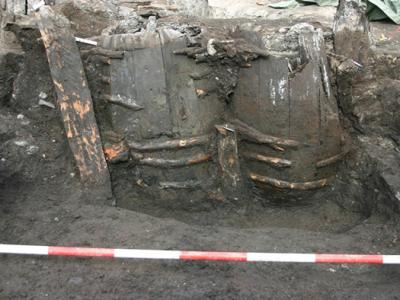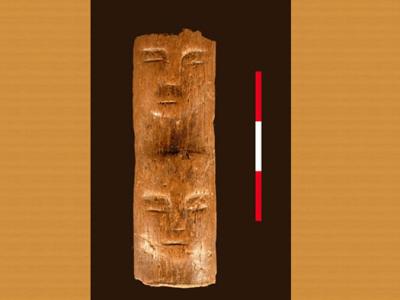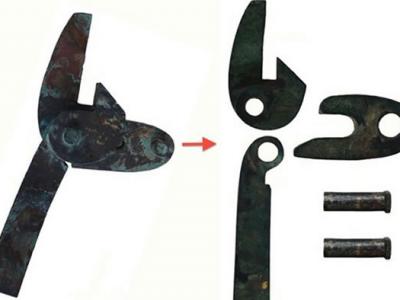Prehistoric Mummies Poisoned
A naturally mummified Chinchorro child found in a Chilean desert.
Brian Handwerk
for National Geographic News
April 13, 2010
Poison-laced drinking water killed some of the world's oldest mummies, which are found in the harsh northern deserts of Chile, a new study says.
Arsenic, which occurs in high levels in drinking water in Chile's northern Camarones Valley (see map), the deadly element likely poisoned the coastal Chinchorro people for centuries, starting at least 7,000 years ago, mummy-hair analyses show.
"I believe [these] ancient people were continuously exposed to arsenic by drinking contaminated water with high arsenic levels [that is] endemic to the Camarones region," said study leader Bernardo Arriaza of Chile's Universidad de Tarapacá de Arica.
The Chinchorro, who wouldn't have been aware they were ingesting the tasteless and invisible toxin, may have suffered from skin, lung, bladder, and kidney cancers, among other serious effects of long-term arsenic exposure.
After they died, the poison victims were sometimes mummified, their internal organs removed and replaced by soil and reeds. Some 7,000 years ago the Chinchorro became the first society known to practice mummification, which transcended social class and included adults, children, and even fetuses.
Arriaza hypothesizes that fetuses and newborns were especially susceptible to arsenic. Because the earliest mummies are fetuses and infants, he suggests that high miscarriage rates may have inspired the mummification process.
(Related: "Drugs Found in Hair of Ancient Andean Mummies.")
But the threat's not just in the past: The valley's drinking water still contains a hundred times more arsenic than is considered safe by the World Health Organization. The contamination has forced area residents to get their water elsewhere, Arriaza said.
Don't Drink the Water
Arriaza and colleagues studied hair samples from 46 ancient mummies previously found in five different sites throughout the arid valley. Some of the study mummies that had been buried after about 1700 B.C. were naturally preserved by the dry climate. (Read about a "salt cured" mummy found in Iran.)
The results showed that nine of every ten Chinchorro mummies—which ranged from 7,000 to 600 years old—had hair with arsenic levels of more than one microgram of arsenic per gram of hair, which is high enough to cause health problems. In some areas, levels were much higher, according to the studies published in recent editions of the Journal of Archaeological Science and the Microchemical Journal.
Metals such as arsenic are common in the region's bedrock and surrounding volcanic slopes, and the poisonous metals are washed by seasonal snowmelt into the rivers that provide drinking water to people downstream.
Once it enters the body, arsenic accumulates in keratin tissue, which exists in human hair and nails. That's why a single strand of mummified hair preserves a record of its owner's exposure to toxic elements.
The findings also reveal a bit about how these pre-Columbian peoples lived, Arriaza added.
For example, some mummies in otherwise arsenic-poor regions had surprisingly high levels of the toxin, suggesting that the Chinchorro moved around—as far as 60 miles (100 kilometers)—possibly for marriages.












